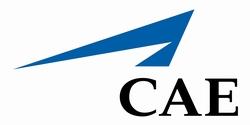Mon, Mar 26, 2012
Industry Feedback Invited On Loss Of Control In-Flight (LOC-I) And Upset Recovery Scenario
CAE and Aviation Performance Solutions (APS) have announced a new web-based tool designed to help standardize full-flight simulator (FFS) instructor knowledge for loss of control in-flight (LOC-I). LOC-I is defined as flight that occurs outside of the normal flight envelope in which the pilot is unable to control the aircraft.

"This new online tool provides a way to effectively deliver a standardized level of theoretical knowledge to a large number of instructors efficiently and quickly," said Lou Nemeth, CAE's Chief Safety Officer. Nemeth is chairman of the FAA Aviation Rule Making Committee (ARC) which has made recommendations to the FAA on how pilots can better manage stall situations. He is also a member of the Royal Aeronautical Society (RAeS) International Committee for Aviation Training in Extended Envelopes (ICATEE). "The objective is to provide an analysis tool for pilots and instructors to recognize the conditions contributing to an LOC-I upset situation and a fundamental core strategy for recovering control and flying the airplane."
"Many LOC-I events are out of-the-envelope, high-stress conditions which develop very rapidly. Business aircraft and commercial pilots who have not experienced advanced military maneuvers or aerobatics training have probably never been exposed to such abnormal areas of the flight envelope," said Paul BJ Ransbury, President of APS, who is a former airline and military fighter pilot. Ransbury is also a co-leader of the RAeS ICATEE group. "By addressing this important area with an easily accessible online training tool, we can help mitigate the serious threat posed by aircraft loss of control situations."
The CAE-APS instructor training tool is based on FAA guidance in the Airplane Upset Recovery Training Aid (AURTA), Revision 2. Key components of the training are an online multimedia presentation powered by CAE Flightscape flight data analysis software, guidance by training experts, and detailed APS upset recovery training options which are integral to instructor assessment and teaching of LOC-I risk mitigation.
The initial CAE-APS training scenario features an aircraft upset event in which a pilot-in-training is attempting to recover from a nose-low, high-bank upset condition in an FFS for the Boeing 737 aircraft. The presentation uses high-definition video, graphic representations of avionics displays and aircraft controls, and a stealth view animation of the aircraft in flight. The aircraft displays and animation are provided through CAE Flightscape software, which captures the data from the simulator event much as a flight data recorder captures information for aircraft in flight.
CAE and APS are making the initial LOC-I scenario available for aviation industry participation and comment through April 28, 2012. Instructors and pilots are invited to view the multimedia presentation, provide feedback on what instruction they would provide to a student during the LOC-I event scenario, and compare their responses with those of training experts. A goal of the project is to establish a global standard for training simulator instructors on how to teach fundamental LOC-I and upset recovery.
More News
Aero Linx: Model Aeronautical Association of Australia MAAA clubs are about fun flying, camaraderie and community. For over 75 years, the MAAA has been Australia’s largest fl>[...]
Touchdown Zone Lighting Two rows of transverse light bars located symmetrically about the runway centerline normally at 100 foot intervals. The basic system extends 3,000 feet alon>[...]
“Discovery and innovation are central to our mission at Virgin Galactic. We’re excited to build on our successful record of facilitating scientific experiments in subor>[...]
How To Get A Story On Aero-TV News/Feature Programming How do I submit a story idea or lead to Aero-TV? If you would like to submit a story idea or lead, please contact Jim Campbel>[...]
Student Pilot Reported That During Rotation, “All Of A Sudden The Back Of The Plane Kicked To The Right..." Analysis: The student pilot reported that during rotation, “>[...]
 ANN's Daily Aero-Linx (05.02.24)
ANN's Daily Aero-Linx (05.02.24) ANN's Daily Aero-Term (05.02.24): Touchdown Zone Lighting
ANN's Daily Aero-Term (05.02.24): Touchdown Zone Lighting Aero-News: Quote of the Day (05.02.24)
Aero-News: Quote of the Day (05.02.24) ANN FAQ: Contributing To Aero-TV
ANN FAQ: Contributing To Aero-TV NTSB Final Report: Cirrus Design Corp SR20
NTSB Final Report: Cirrus Design Corp SR20



